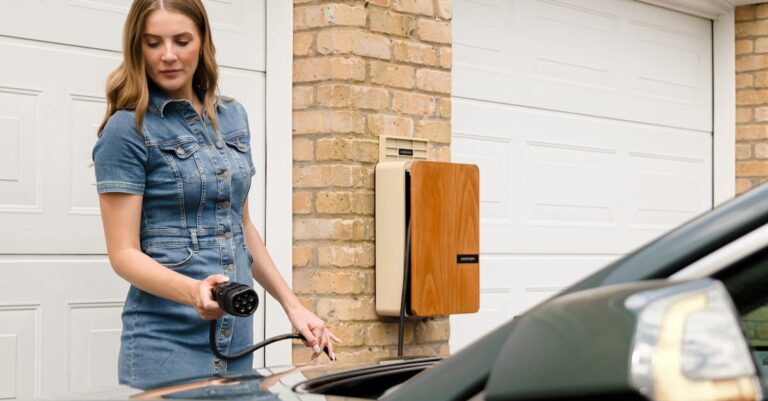Table Of Content
- Fuel Efficient Cars: Top Picks Now
- Why Bother With Fuel Efficiency Anyway?
- Understanding Fuel Efficiency: MPG, MPGe, and More
- Types of Fuel Sippers: Picking Your Poison (The Good Kind!)
- Our Top Picks for Fuel Efficient Cars Right Now
- Factors to Consider Beyond MPG
- Making Your Choice: Finding Your Perfect Fuel Efficient Match
- Conclusion: Driving Towards a Greener (and Cheaper) Future
- Frequently Asked Questions (FAQs)
Fuel Efficient Cars: Top Picks Now
Let’s face it, watching that gas pump number climb higher and higher can feel like a punch to the gut. Fuel prices seem to be on a perpetual rollercoaster, mostly heading upwards. So, what’s a driver to do? Well, shifting gears towards a more fuel efficient car isn’t just a trendy move; it’s a smart one. Whether you’re tired of donating your hard earned cash to the gas station gods or you’re looking to shrink your carbon footprint, finding a ride that sips fuel instead of guzzling it is becoming increasingly appealing. But where do you even start? The market is flooded with options claiming fantastic mileage. Don’t worry, we’re here to cut through the noise and highlight some of the top fuel efficient cars you can get your hands on right now.
Why Bother With Fuel Efficiency Anyway?
Okay, maybe the answer seems obvious, but let’s break down *why* making fuel economy a priority when car shopping is such a game changer. It’s about more than just feeling virtuous.
Saving Money at the Pump (Duh!)
This is the big one, right? Every mile per gallon (MPG) improvement translates directly into keeping more money in your pocket. Think about it: if you drive 12,000 miles a year and gas is $3.50 per gallon, upgrading from a car that gets 25 MPG to one that gets 40 MPG saves you over $600 annually! Drive more, or if gas prices spike (which, let’s be honest, they often do), those savings multiply significantly. It’s like giving yourself a raise, just by choosing a different set of wheels. Over the lifespan of a car, we’re talking potentially thousands of dollars saved. Who wouldn’t want that?
Kinder to Mother Earth
Burning less fuel means releasing fewer greenhouse gases like carbon dioxide (CO2) into the atmosphere. Transportation is a major contributor to air pollution and climate change. By opting for a more fuel efficient vehicle, you’re actively reducing your environmental impact. It’s a small step individually, but collectively, these choices make a massive difference. Think of it as casting a vote for cleaner air and a healthier planet every time you drive.
Less Reliance on Fossil Fuels
Gasoline comes from crude oil, a finite resource often sourced from geopolitically sensitive regions. The less fuel we collectively consume, the less dependent we are on these fluctuating global supplies. Greater fuel efficiency contributes to national energy security and can help stabilize energy prices in the long run. It’s about building a more sustainable and resilient energy future, one efficient car at a time.
Understanding Fuel Efficiency: MPG, MPGe, and More
You see these numbers thrown around all the time – MPG this, MPGe that. But what do they actually tell you about how much fuel (or energy) a car uses?
What Does MPG Actually Mean?
MPG stands for Miles Per Gallon. It’s the classic measurement for gasoline powered cars. It tells you, on average, how many miles a car can travel on one gallon of gasoline. You’ll usually see two or three figures: city, highway, and combined. City MPG is typically lower because of all the starting, stopping, and idling involved in urban driving. Highway MPG is usually higher due to more consistent speeds. The combined MPG gives you a weighted average, reflecting typical driving patterns (usually weighted slightly more towards city driving). Pretty straightforward, right? Higher MPG = less fuel used per mile.
Decoding MPGe for Electrified Rides
Now, things get a tad more complex with hybrids, plug in hybrids (PHEVs), and electric vehicles (EVs). Since these cars use electricity (at least partially), measuring efficiency solely in MPG doesn’t work. Enter MPGe, or Miles Per Gallon equivalent. The Environmental Protection Agency (EPA) devised this metric to represent the distance a vehicle can travel using a quantity of electrical energy that has the same energy content as one gallon of gasoline (approximately 33.7 kilowatt hours, or kWh). This allows for a rough comparison between gasoline cars and electrified vehicles. For PHEVs, you’ll often see both an MPGe rating (for when it’s running on electricity) and a standard MPG rating (for when the gasoline engine kicks in).
Types of Fuel Sippers: Picking Your Poison (The Good Kind!)
Fuel efficient doesn’t mean just one type of car anymore. You’ve got choices, each with its own way of saving fuel.
Traditional Gasoline Cars (Still Got Game!)
Don’t count out the good old internal combustion engine just yet! Automakers have made huge strides in making gasoline engines more efficient. Technologies like turbocharging smaller engines, direct injection, cylinder deactivation (where the engine shuts down some cylinders when cruising), and advanced transmissions (like CVTs or those with lots of gears) help squeeze more miles out of every drop. These cars are often less expensive upfront than hybrids or EVs and the technology is familiar territory for maintenance.
Hybrid Heroes: The Best of Both Worlds?
Hybrids combine a gasoline engine with one or more electric motors and a small battery pack. They offer significantly better fuel economy than their gasoline only counterparts, especially in city driving.
How Hybrids Work Their Magic
Think of it like a tag team. The electric motor often handles low speed driving and initial acceleration, sipping energy from the battery. The gasoline engine kicks in when more power is needed or at higher speeds. The clever part? Hybrids use regenerative braking – when you slow down or brake, the electric motor acts like a generator, capturing energy that would normally be lost as heat and sending it back to recharge the battery. You don’t plug them in; they generate their own electricity on the go. This constant interplay between gas and electric power is what delivers those impressive MPG figures.
Plug In Hybrids (PHEVs): Stepping Up the Electric Game
PHEVs take the hybrid concept a step further. They have a larger battery pack than traditional hybrids, which allows them to travel a significant distance (typically 20 to 50 miles, sometimes more) purely on electric power. You charge the battery by plugging it into an outlet, just like an EV.
The PHEV Advantage
The beauty of a PHEV is its flexibility. If your daily commute is within the electric range, you might go weeks or even months without using gasoline! You essentially have an electric car for short trips. But, unlike a pure EV, you still have the gasoline engine as a backup for longer journeys, eliminating range anxiety. Once the battery depletes, it operates like a regular hybrid, still offering excellent fuel efficiency. It’s a great transitional technology for those not quite ready to go fully electric.
Electric Vehicles (EVs): The Ultimate Fuel Savers? (Technically!)
Okay, EVs don’t use *any* gasoline, so their MPG is technically infinite (or undefined). They run entirely on electricity stored in a large battery pack. Their efficiency is measured in MPGe or often in kWh per 100 miles (lower is better). While they don’t save you money on *gasoline*, they save you money on *fuel* by using electricity, which is generally cheaper per mile than gasoline. Plus, they produce zero tailpipe emissions. The main considerations are purchase price (though dropping), charging infrastructure availability, and range anxiety (though modern EVs offer substantial range).
Our Top Picks for Fuel Efficient Cars Right Now
Alright, let’s get down to brass tacks. Which cars are currently leading the pack in fuel efficiency? Keep in mind that models and specs change, but these contenders consistently impress.
The Hybrid Champion: Toyota Prius Family
You can’t talk hybrids without mentioning the OG, the Toyota Prius. It practically defined the segment and continues to be a benchmark for fuel efficiency.
Why It Shines
The latest generation Prius looks surprisingly sharp (a far cry from its predecessors!) and delivers outstanding fuel economy, often exceeding 55 MPG combined in standard hybrid form. The Prius Prime (its PHEV variant) offers a very usable all electric range (around 40+ miles) alongside stellar hybrid MPG once the battery is depleted. Toyota’s hybrid system is renowned for its reliability and smooth operation. It’s practical, comfortable enough for daily driving, and packed with modern tech. While it might not be the most thrilling car to drive, its relentless focus on efficiency is hard to beat.
The Plug In Powerhouse: Toyota RAV4 Prime
Want SUV versatility with plug in hybrid efficiency and surprising performance? The RAV4 Prime delivers.
What Makes It Stand Out
The RAV4 Prime offers a substantial all electric range (around 42 miles), allowing many owners to handle their daily commutes entirely on electricity. Even when the battery runs out, it still operates as an efficient hybrid SUV, achieving close to 40 MPG combined. What’s surprising is its power; it’s actually one of the quickest vehicles Toyota sells! You get standard all wheel drive, plenty of cargo space, and Toyota’s reputation for reliability. It’s pricier than a standard RAV4 Hybrid, but the combination of electric range, efficiency, and performance makes it a compelling package if it fits your budget and charging capabilities.
The Gas Miser Master: Hyundai Elantra (Non Hybrid)
Looking for excellent fuel economy without the added complexity or cost of a hybrid system? Certain trims of the Hyundai Elantra are serious contenders.
Efficiency Without Electrification
Specifically, the Elantra SE trim, equipped with Hyundai’s Smartstream gasoline engine and intelligent variable transmission (IVT), achieves impressive MPG figures, often hitting the high 30s or even low 40s on the highway. While not hybrid numbers, this is fantastic for a conventional gasoline sedan. The Elantra also offers sharp styling, a comfortable interior, plenty of standard features, and Hyundai’s excellent warranty. It proves that smart engineering can still deliver great fuel savings in a traditional package, often at a lower purchase price than electrified alternatives.
The Compact Commuter King: Honda Civic Hybrid
The Honda Civic has long been a favorite for its blend of practicality, reliability, and fun to drive nature. The hybrid version adds impressive fuel efficiency to the mix.
Balancing Fun and Frugality
Returning to the lineup, the Civic Hybrid manages to achieve MPG figures close to or exceeding 50 MPG combined, putting it right up there with the best hybrids. What sets it apart is that it retains much of the standard Civic’s engaging driving dynamics and refined interior. Honda’s two motor hybrid system provides smooth, responsive acceleration. You get efficiency without feeling like you’re driving an appliance. Available as both a sedan and potentially a hatchback, it offers versatility for commuters and small families alike.
The Family Friendly Fuel Saver: Kia Niro
The Kia Niro is unique because it’s designed from the ground up to be electrified, offered as a hybrid, plug in hybrid, and full EV. We’ll focus on the hybrid and PHEV here.
Space and Savings Combined
The Niro cleverly blends crossover like space and practicality with car like efficiency. The standard hybrid version regularly achieves over 50 MPG combined, making it incredibly frugal for a vehicle with its interior volume. The PHEV version offers a useful electric range (around 33 miles) combined with good hybrid efficiency afterwards. It boasts a stylish design, a tech forward interior, and Kia’s generous warranty. For families or individuals needing more space than a typical sedan but still prioritizing fuel economy, the Niro is a fantastic choice.
Factors to Consider Beyond MPG
While MPG is crucial, it’s not the only factor when choosing a fuel efficient car. You need to look at the bigger picture.
Purchase Price vs. Long Term Savings
Generally, hybrids and PHEVs cost more upfront than their gasoline only counterparts. You need to calculate how long it will take for the fuel savings to offset that higher initial price. This depends on how much you drive, gas prices in your area, and potentially electricity costs if considering a PHEV or EV. Sometimes, government tax credits or incentives can help bridge the gap, so be sure to research those!
Driving Habits and Needs
How do you typically drive? If most of your driving is short commutes in the city, a hybrid or PHEV will likely offer significant savings, as they excel in stop and go traffic where regenerative braking shines. If you do mostly long highway cruising, an efficient gasoline car or a hybrid might still be very effective, but the advantage of a PHEV’s electric range diminishes. Also consider your passenger and cargo needs – a tiny two seater might be super efficient, but not practical if you need to haul kids or gear.
Maintenance Costs
Modern hybrids are generally very reliable. Some components, like brake pads, might even last longer due to regenerative braking doing much of the work. However, if the complex hybrid system *does* need repair out of warranty, it could potentially be more expensive than fixing a conventional gasoline car. Battery replacement is often a concern, but hybrid batteries are typically designed to last the life of the vehicle and often come with long warranties (8-10 years/100,000-150,000 miles is common).
Making Your Choice: Finding Your Perfect Fuel Efficient Match
So, how do you tie it all together? Start by assessing your budget, including both the purchase price and anticipated running costs. Then, honestly evaluate your driving needs – daily mileage, typical routes (city vs. highway), passenger/cargo requirements. Research the specific models that fit these criteria, comparing their real world fuel economy (owner reviews can be helpful here, alongside EPA figures), reliability ratings, and features. Don’t forget to test drive! How a car feels on the road is just as important as its spec sheet. Does the hybrid transition feel smooth? Is the performance adequate for your needs? Finding the *right* fuel efficient car is about balancing economy, practicality, budget, and personal preference.
Conclusion: Driving Towards a Greener (and Cheaper) Future
Choosing a fuel efficient car is one of the most practical ways to save money and reduce your environmental impact in today’s world. Whether you opt for a super efficient gasoline model, a classic hybrid, a flexible plug in hybrid, or even leap to a full EV, there are fantastic options available that sip fuel (or electricity) without necessarily sacrificing comfort, features, or even performance. From the long reigning Prius to versatile options like the RAV4 Prime and Niro, or efficient commuters like the Civic Hybrid and Elantra, the choices are better than ever. By considering your needs and doing a little homework, you can find a vehicle that keeps both your wallet and the planet a little happier. Happy driving, and happy saving!
Frequently Asked Questions (FAQs)
Q1: Are hybrid cars really worth the extra cost?
A: It depends heavily on your driving habits and local fuel prices. Hybrids cost more upfront, but offer significant fuel savings, especially in city driving. Calculate your estimated annual fuel savings based on your mileage and compare it to the price difference (the “premium”) for the hybrid model. If you drive a lot, particularly in stop and go traffic, the savings can recoup the extra cost over a few years. If you drive very little or mostly on the highway, a highly efficient gasoline car might be more cost effective overall.
Q2: How accurate are the official MPG ratings?
A: The EPA’s MPG ratings are achieved under standardized laboratory conditions, designed to be comparable across different vehicles. However, your real world mileage (“your mileage may vary,” as they say) can differ based on factors like driving style (aggressive acceleration and braking hurts MPG), speed (efficiency often drops significantly above 60-65 mph), terrain (hills require more energy), weather (cold weather can reduce efficiency, especially for hybrids/EVs), tire pressure, and vehicle load. Think of the EPA rating as a useful benchmark for comparison, not an exact prediction of your personal results.
Q3: Do fuel efficient cars sacrifice performance?
A: Not necessarily anymore! While some base model fuel sippers prioritize economy above all else, many modern fuel efficient cars, especially hybrids and PHEVs, offer surprisingly brisk acceleration. The instant torque from electric motors can make hybrids feel quicker off the line than comparable gasoline cars. For example, the RAV4 Prime is quite fast. Even efficient gasoline engines with turbochargers can provide decent performance. While they might not be sports cars, most modern fuel efficient vehicles offer perfectly adequate (and sometimes impressive) power for daily driving.
Q4: What’s the difference between a mild hybrid and a full hybrid?
A: A full hybrid (like a Toyota Prius or Honda Civic Hybrid) can drive the wheels using electric power alone, gasoline power alone, or a combination of both. They have a larger battery and more powerful electric motor(s). A mild hybrid typically uses a smaller electric motor/generator (often integrated with the starter/alternator) primarily to assist the gasoline engine during acceleration and to enable smoother engine start/stop functionality. It cannot usually propel the car on electricity alone. Mild hybrids offer a smaller fuel economy improvement compared to full hybrids but are generally less complex and less expensive to implement.
Q5: Will fuel efficient cars save me money even if gas prices drop?
A: Yes, although the *amount* you save will be less when gas prices are low. A car that gets 50 MPG will always use half the fuel of a car that gets 25 MPG, regardless of the price per gallon. So, while the dollar savings might shrink if gas becomes cheaper, you’ll still be spending significantly less on fuel compared to driving a less efficient vehicle over the same distance. Plus, gas prices are notoriously volatile; locking in better fuel efficiency provides a buffer against future price spikes.









